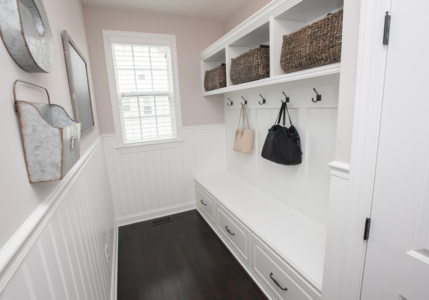Marie Kondo is a surprisingly controversial force in the world of home organization. Although she has a gentle manner that’s easy to love, her KonMari cleaning method has received criticism over the years.
Does it work? Could it improve your home organization? Below, Diplomat Closet Design takes a closer look at this intriguing way to clean out your closets.
What is the KonMari Method?

World-famous organizing expert Marie Kondo developed her method in Japan at the age of 15 while trying to free herself of belongings that brought feelings of sadness and stress. Over the next decade, she elaborated on her approach and established the KonMari Method of home organization.
Her approach gained prominence in the early 2000s at a time when the world was asking difficult questions about the immense psychological burden of clutter. Television shows like Hoarders and Clean House brought global attention to the psychiatric diagnosis of hoarding and made millions of people take a fresh look at their cluttered homes.
Kondo’s 2011 book, “The Life-Changing Magic of Tidying Up,” became an international bestseller and explained how to accomplish her unique cleaning method, step by step. In 2015, Kondo was named one of Time Magazine’s 100 Most Influential People for transforming how humans view their belongings.
How Does the KonMari Method Work?
Traditionally, most home organization methods address a specific location in the home. For example, it’s common to start an organization project by thinking, “I should clean out my bedroom closet.”
If you hire a professional home organizer, they will often focus on a specific area or room. Similarly, most professional cleaning price quotes are based on the rooms you’re requesting or the square footage of spaces to be cleaned.
The KonMari Method takes an entirely different approach. It focuses on categories, not locations, and connects your items to your emotions. You move throughout your home looking for all items of a category type – like clothing, appliances, or books – and thoughtfully consider whether you truly adore each item. If not, it’s time to let go of it.
Perhaps the most famous part of KonMari is taking a moment to hold each item in your hands and ask yourself, “Does it spark joy?” Keep only the items that speak to your heart and inspire warm feelings of positivity. Any item that doesn’t spark joy should be donated or discarded.
Why Do People Criticize the KonMari Method?
The KonMari Method requires a high degree of personal honesty and self-reflection, so some people find it to be an exhausting process. Research shows the average American owns around 300,000 individual items. It feels almost impossible to evaluate each item and decide whether it sparks joy. Does a fork spark joy? A sock? A trash can?
Kondo has also been heavily criticized for her dislike of keeping collections like shelves full of books. She says, “I myself keep no more than 30 volumes in my home.” Some critics interpret this to mean, “Never keep more than 30 books,” which might be a horrifying thought for an avid reader.
On the other hand, Kondo’s fans say criticisms of her approach are willful misinterpretations. The KonMari Method isn’t a hard-and-fast rule about decluttering and is intended to be flexible and adaptable. It works, as long as you have the right mindset.
Today, Kondo herself says she’s “kind of given up” after so many years as a busy working mother with three young children. She advises avoiding extreme tidiness, following your heart, and sparking your own version of joy.
How to Organize Your Closets Successfully

What about you? Have you tried the KonMari Method? Are you still struggling to stay organized?
Here at Diplomat Closet Design, we can help you clear clutter and make it last with effective closet organization strategies. Our goal is always to leave you feeling happy and healthy.
When you’re ready to organize your home, Diplomat Closet Design is here to support your cleaning journey. To learn more, please connect with us.
If you live in Montgomery County in towns such as Ardmore, Collegeville, or Valley Forge, contact us today.











